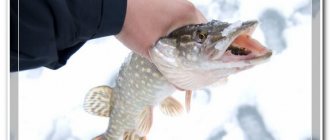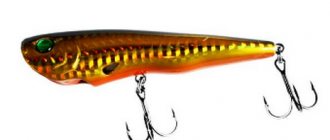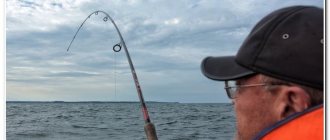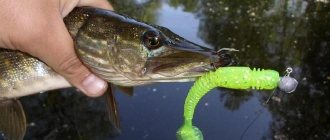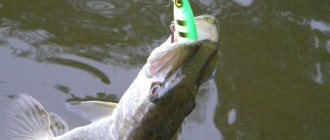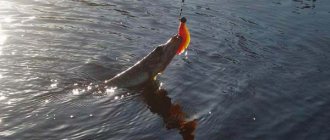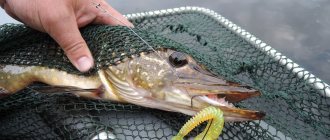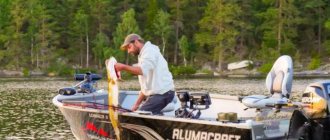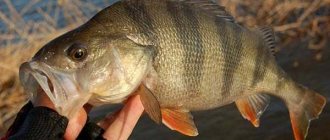In early spring, pike begin to be caught using spinning rods from the shore and boats. This article outlines tips and recommendations for choosing bait, as well as searching for pike in a pond in the spring.
Within the framework of this article, we will analyze in detail the spinning method of fishing , although pike can also be caught with circles and on a track. Less often - on a donk or a regular float rod.
The best time to hunt pike is spring. At this time she bites throughout the day. 10-12 days after spawning ends, the pike tries to stay in deeper waters. It becomes too weak and therefore, as a rule, is not caught on a spinning rod. However, later the spring 2-3 week long feeding season comes, and catching a pike will not be difficult with any gear.
Peculiarities of biting in March
In March, pike are much better than in April and May. These days, it actively feeds after winter stagnation, regardless of whether the ice has melted from the reservoir or not. You can use a variety of baits for catching pike in March.
A wonderful video about pike fishing in early spring:
When fishing for pike in March, there is no need to experiment. At this time, the pike is actively biting, but at the same time, the weather is still too cold. Despite this, winter gear should not be used. A bottom fishing rod will also not work. The best option is spinning fishing. In this case, artificial bait should be used.
Seasonal features of pike behavior in spring
The habits of pike in the spring depend entirely on the characteristics of the reservoir and the rate of warming in that particular year. Apart from specific conditions, spring is a catchy season for catching pike with a spinning rod. However, at its various stages, the toothy fish occupies either deep water or shallow backwaters in the reservoir, and does not feed at all during spawning. Accordingly, in each specific body of water, the fisherman needs to get to the right place and time, and at the same time, the melting of ice also needs to be taken into account. Therefore, you need to focus not on calendars, but on natural changes tied to a specific region and body of water.
- The first period is pike fishing in early spring, when there is no ice, but it is still cold. There is usually snow along the banks, the water is clear and there is no smell of flood yet. If all the circumstances are combined successfully with a spinning rod, you can get into the pre-spawning feeding of pike, or its course upstream. This is not possible in all bodies of water - in some places they are still frozen, but the pike is already moving and being caught under the shell. It is more likely to catch this time with a spinning rod on small rivers and streams, in the year with early spring, when they are already open in March. And with the breaking of the ice, the water immediately begins to rise - then this stage falls out for the spinning player. However, in this case, on hard water it is better to focus on winter pike fishing on the last ice
- In the southern regions, ice often melts off on small rivers as early as February. This seems to be just what is needed for spinning. However, in many regions from January 15 to February 28 (29) there is a ban on pike fishing, since at this time it is the feeding time of the egg predator that rises to spawn. Therefore, you will have to wait until March 1, both with spinning rods in open water and with fishing rods in places where there is ice.
- On large rivers and reservoirs this stage is often impossible for spinning rods. The only way is to climb off the ice until it breaks. The only option is in warm winters, when there is no ice in March and the flood is not yet expected.
- Later, pike begin to be caught using spinning rods in deep ponds and quarries with a hard bottom, which warm up slowly and the influx of fresh water is weak.
- Pike do not bite during spawning, but after it the post-spawning feast and stable spring fishing begin. However, in some regions and reservoirs there are restrictions on spinning or the number of hooks (therefore, large wobblers with three tees cannot be used everywhere), read the rules for your region or area of the reservoir. This stage smoothly flows into regular summer spinning for pike.
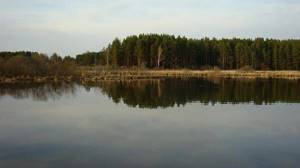
How to equip a spinning rod for pike
If you are going to catch pike with a spinning rod, you should choose the right gear. The spinning rod should be 2.5-4 meters long. It is desirable that it has a soft tip. It makes it easier to control the bait. For standard fishing with a medium-sized jig, you can use a spinning rod with 5-25 or 10-30 gr. Smaller or larger tests are suitable for specific baits and more experienced fishermen.
Catching pike with a retractable leash is an equipment often used for jig fishing.
Which spinning rod is the best?
It is advisable to purchase a spinning rod from well-known, trusted manufacturers. Such products are more expensive, but they naturally have a different level of quality. This spinning rod is very durable and can serve for many years. If you can't afford such a purchase, take the middle class. In general, the differences in fishing will be insignificant.
Coil
The spinning reel is selected depending on the fishing conditions.
You should not buy a baitcasting reel, as you will get tired of untangling beards - this is not an option at all for catching a toothy predator. A medium-sized spinning reel is perfect for pike fishing. It is also advisable to take care of a spare bobbin.
fishing line
It is important that the line goes without any problems, easily and simply. The reel should be wound with monofilament, the thickness of which should be approximately 0.25 mm - this is the optimal size for pike. Thicker lines can spook fish, and thin lines aren't as strong.
When fishing with spinning rods, anglers are increasingly giving preference to braided fishing line - it is more reliable. The disadvantage of such a fishing line is its price, as well as some physical features that can lead to cuts if handled carelessly during wiring.
Lures
In March, pike can be caught using a variety of baits (jigs, spinners, wobblers). This is the period when there is a lot of caviar in the belly of the predator, so large baits do not attract it. If the size of the bait is more than 5 cm, the pike simply will not be able to swallow it. For fishing in the second half of spring, when spawning has not yet passed, you should take the smallest baits.
The video below shows spinning lures used to catch large pike .
Choosing lures for pike fishing with a spinning rod is a wonderful detailed guide to choosing bait.
If you are a beginner, then stock up on a standard set of baits, among which you will have something to use when fishing and evaluate the catchability of the equipment and its attractiveness to a predator:
- Three rotating spinners.
- Three oscillating spoons.
- Five medium twisters with 10-15 gram jig heads.
- Five silicone vibrating tails.
Through experimentation, you should choose the size and color of the bait. Pike can behave unpredictably in different conditions, so you need to act according to the circumstances.
Pike in mid-spring
In the northern regions, the described period of fishing before high water often falls in April - in this case, we proceed as in the paragraph about fishing in early spring. With further warming comes high water, pike scatter across the flooded meadows and begin to spawn. Pike do not bite during spawning - at this time you can only catch pencils with a spinning rod. However, this is when tied to one specific body of water. In another nearby river or lake, everything may be different, depending on the speed of the onset of spring changes.
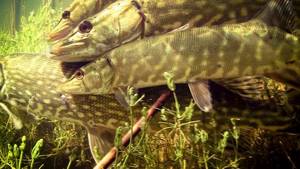
At the peak of the flood, when debris and branches are carried along the riverbed, fishing with a spinning rod is problematic. But it is possible - in quiet, flooded places that are specifically known, if the water there has more or less settled and the fry are present, and the spawning has already ended. Pike in muddy water in the spring does not stand in the riverbed - it is already somewhere in the coastal zone, in the shallows and in the bushes. At this time, even old ancient trophy crocodiles crawl out into the grass to give birth.
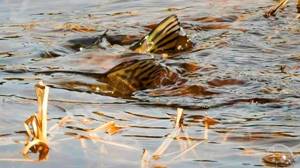
The post-spawning meal for pike in the spring begins a week after spawning - and this is the time that spinning anglers look forward to. Depending on the region, this period of spring can occur either in April or in the first half of May. If on a particular reservoir this coincides with the decline of the flood and the purification of the water, the spinning angler is incredibly lucky. Therefore, you need to choose the right body of water for fishing. On the river the muddy water is still rustling with might and main, but in the pond nearby it is clean, warm and calm, and the spawned pike can begin to actively eat everything.
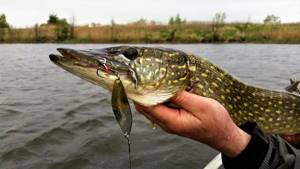
It is best to catch pike with a spinning rod in April during the post-spawning period in quiet bays and ponds, or in rivers in which the flood has subsided or did not exist at all. If you focus on the water temperature, it’s 7-10 degrees. In all these places - in quiet creeks, rumbles, on shallows with grass, where young green reeds sprout. In these future fronds or nearby, the pike will stay in the spring until the water temperature rises to 14 degrees, after which it will move a little deeper, to summer moorings.
Promising points for spinning:
- Areas in shallow waters with already cleared water, especially near thickets, in reeds, with depths of up to 1-1.5 meters.
- Points where overflowing water enters the meadows, in the area of old reeds on the shore, now flooded, on the border of clear and muddy water.
- Any bays with reeds, grass and clear water - life is now in full swing here, peaceful fish are preparing for spawning, and a hungry pike is waiting for them.
- Extensive shallow waters on ponds and lakes with sparse vegetation, no deeper than 1.5 meters.
- Large floodplain lakes and oxbow lakes, connected to the main channel by canals and ducts.
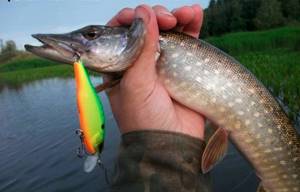
Post-spawning zhor
A popular sign of the beginning of the activation of pike biting after spawning is the flowering of bird cherry, leopard and dandelions, as well as the mating songs of quails in the fields. It is better to focus on natural clocks - they will not deceive, unlike some incomprehensible calendars of biting in the spring, it is not known on what basis they were compiled. Depending on the region, this may occur in late April, early or mid-May.
During this period, spring bans begin to apply - almost everywhere you can’t fish from a boat. You can use one fishing rod or donka with one hook from the shore. Therefore, in some places, for example, wobblers or even spinners with tees are not allowed - only a single hook (for example, an offset hook on a spinner). It all depends on the wording of the prohibition in the law. In some regions you can fish with a spinning rod, without any restrictions on hooks (that is, wobblers and tees are possible). Therefore, we carefully study the fishing rules for a specific region or fishing basin - the deadlines and restrictions are different everywhere.
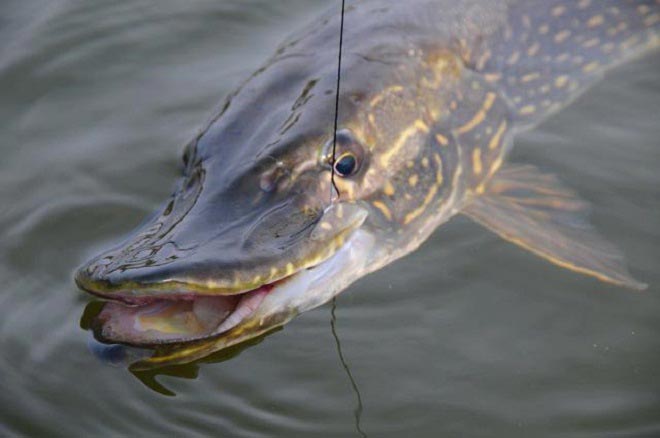
As for baits, everything is the same, it is important to choose a working option, wiring, and colors. Non-hooking and surface topwaters are becoming more relevant, since the pike is standing in or near the bushes. Any spoon or spinner can be equipped with an offset bait with a twister or a tee with antennae - we get a spoon that can go right among the thickets.
They say that pike prefer small baits in the spring. In some cases this is true, but it is still advisable to use 130 wobblers or large silicone for large toothy ones. A trophy predator may simply not pay attention to a spinner in size 1 or 2 or a tiny twister on a spinning rod. But it will react immediately to the splash of a 5-inch vibrating tail into the grass on an offset or a large popper (wobbler, spinner) if it is standing nearby.
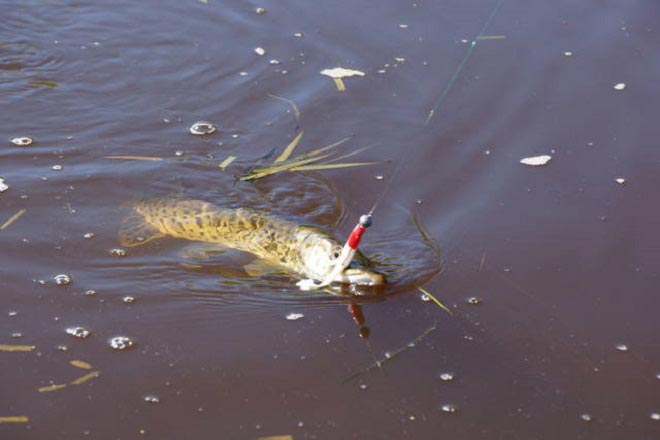
The best lures for pike
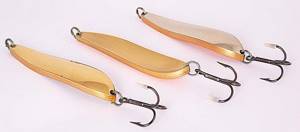
Spoons
, an oscillating spoon is best suited . For deep predators, you should take a heavy spoon. When spawning takes place, use bait that is small in both weight and size so that it can be retrieved in shallow water. At this time, the pike becomes lethargic and weak, so it does not chase prey.
Wobblers
Anything can happen while fishing. Pike may absolutely not go to the oscillating spoon. Many fishermen use a wobbler in such a situation. The best wobbler for pike is Minnow (extended wobbler). The most suitable option for spring pike hunting is a suspender, since it can harden in water. Even a well-fed predator will not be able to resist such bait.
Spinnerbait
Spinnerbaits are one of the varieties of non-hook baits that allow you to catch pike in any thicket. They are able to lure out even the most cautious pikes and do not cling to anything even in dense vegetation. If the reservoir is really thick in terms of algae, a spinnerbait is a good option.
Jig (twisters and vibrotails)
Excellent results when fishing for deep-sea pike can be obtained by using a traditional jig weighing up to 10 grams. You should also carefully decide on the size of the bait. A small fish will not notice, but a large one may scare it away. The best size is 6-8 cm. To make the bait more attractive, use twisters and colorful vibrotails. Experienced fishermen believe that this bait is the best for spring jig fishing.
Fishing with live bait
Pike loves live bait - this is a fact, but when fishing with a spinning rod, live bait is rarely used. pike is the rule. Below is a picture of how a live bait is attached to a fairly large hook.
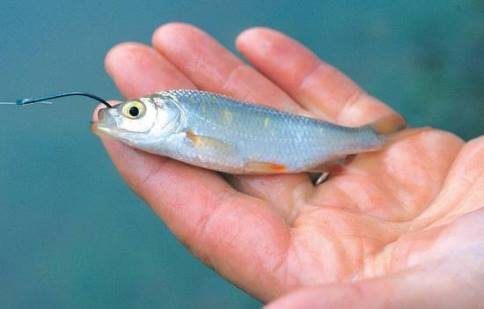
The larger the bait, the more pike you will catch.
Tackle
It is quite difficult to choose gear for catching pike with a spinning rod, despite all the simplicity that may come to the mind of novice fishermen. Pike is a fairly strong predator and, therefore, the tackle must be powerful and reliable so that it does not let you down at the most crucial moment.
This predator grows to very large sizes; there are even known facts when the largest pike was caught using a spinning rod. Therefore, you should always protect yourself and choose durable gear so that pike fishing with a spinning rod is successful.
Spinning
The question of which spinning rod to choose for pike fishing is asked by anglers immediately after they decide on the fishing conditions. If you plan to catch pike from the shore using a spinning rod, then a 2.8-meter rod will be enough for you, which will not create discomfort while fishing. Well, catching pike from a boat using a spinning rod requires the fisherman to have a spinning rod of shorter length, about 2 meters.
The choice of rod power is directly influenced by the size of the bait used and the size of the expected prey. If you catch pike with a spinning rod using a microjig, then you will only need to choose a spinning rod with a test weight of up to 10 grams. When fishing with wobblers and spinners, it is better to take sticks with an average test range from 5 to 20 grams. And for fishing on a river with a large current, you need to buy a more powerful spinning rod, with a test weight of about 40 grams.
For fishing with wobblers, spinning rods of medium or fast action are selected. And for using spinners and small silicone baits, a slow action blank will be sufficient; in some conditions (for fishing on small rivers) it is better to use a fast action spinning rod.
We suggest you read: Salting delicious fish at home
Coil
You need to choose a reel very carefully; it’s worth noting one important piece of advice right away - take reels only from well-known manufacturers that you have used yourself and are confident in their quality. It is better to choose a reel spool size of about 1500-2500 according to the Shimano classification. This size is enough to wind 100 meters of fishing line or braid with a diameter of about 0.25 mm.
Otherwise, the requirements for the coil are standard:
- smooth ride;
- at least three bearings;
- friction brake with the ability to be sensitively adjusted.
Questions about what is better than fishing line or braid have been circulating among fishermen for several years now, but there is still no clear answer to this question. It’s simple – a certain type of fishing line is better suited for certain conditions. For example, for jig fishing it is better to use braided line. And for fishing in other ways, a high-quality and reliable fishing line will be enough.
Leash
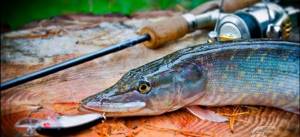
Fishing for pike with a spinning rod requires the mandatory use of a metal leash. The teeth of this predator are very sharp and large, so the likelihood that the fish will bite the fishing line is quite high.
Fishermen most often use the following leashes:
- Tungsten;
- Metal (steel);
- Kevlar.
Some people prefer to make their own leashes, for example from guitar strings. It’s quite simple to make: take a piece of string and make two loops at its ends. The main line must be attached to one loop, and the bait is attached to the other. To change baits as quickly as possible while fishing, you can attach a clasp to one loop. Such leashes are often used when fishing for pike with live bait.
Equipment
The equipment is quite varied, but there is talk among spinners that only one is catchy. It is used quite often and almost every angler is familiar with it. The idea is extremely simple - a metal leash with a clasp is attached to the end of the main line, and then the bait is attached to it. Very often, fishermen are afraid that a leash will scare away a predator and refuse to use it. It is not right.
Wiring and technology
Aggressive wiring
Spinning fishing is almost the same in May as in early spring. But for this you need to find a good place. Throw the tackle and start making a quick reel, but without acceleration. If you cast your bait in shallow water, your chances of catching a fish will increase significantly. A stepped or slow approach in May does not give much effect, because if the pike is found in this place, it will grab the prey in any case.
If you're lucky and the pike takes the bait, it's time to hook it. Before spawning, the pike will not resist much, so you can easily get it out of the water. There are even predators that do not make any jerks when they are taken out of the water. They are easy to bring to shore. Despite the fact that pike is considered a solitary predator, if you catch a fish, try casting the tackle with bait again to the same place. Either way, you'll catch another fish with a belly full of eggs.
Fishing from a boat
To catch pike from a boat, you can use fishing devices that are suitable for fishing from the shore. Fishing from a boat is done by placing bait. This is a rather complicated process. For fishing in small bodies of water, small swimming devices should be used. If you find a school of white fish using your echo sounder, you can be sure that the catch will be large, since pike usually feed near such schools. You can also try fishing for pike in the bottom area, especially in places where there are a lot of irregularities. If there is little activity, you can try fishing with wobblers with rattles.
Techniques for catching spring pike using spinning tackle
Every experienced spinning fisher has his own opinion on how to properly lure and land fish, and it quite often differs from the opinions of other fishermen. They choose the most preferable fishing technique for themselves, based on personal experience and other facts. We will only touch on the basic aspects that all novice pike hunters need to know about.
The pike bite in spring is characterized by the fact that it occurs almost all day, from sunrise to late evening. The most effective time of day is, of course, morning and evening. But if the weather is cloudy or rainy, fishing in the daytime also brings good results.
In March, the pike still behaves quite passively and therefore will have to be lured out of the depths. The same applies to April fishing. You should start looking for pike in the spring from the bottom. The first few casts you need to keep the spoon in the bottom layers of water, as deep as possible. If there are no bites, then it is necessary to gradually raise it to the upper water layers. Retrieving at the bottom should be slow and careful, and when the lure is closer to the surface of the water, you need to gradually increase the retrieving speed.
In May, pike fishing using spinning rods is most active on the surface. When fishing for pike from the shore, the fan method works well. It consists of a large number of casts, fishing the entire reachable area. It is necessary to alternate casting the spoon, from one side to the other, closer to the shore and further from it, and vice versa. If none of the casts are successful, you need to change the spoon. Then repeat this technique again. If changing spinners does not give positive results, it is worth changing the place of fishing.
As soon as the pike swallows the bait, it must be fished out immediately. If you drag out time, it may float away into a snag. When the pike that has swallowed the hook is in close proximity, make a short but sharp and strong hook. If the fish is far from you or is carried away by the current, you should also hook sharply, but more widely.
A pike predator that comes across with a light weight of about 2-3 kg will try to free itself as quickly as possible, using various techniques. But every experienced angler knows how to catch pike with a spinning rod in the spring, and therefore uses various tricky methods to prevent the fish from jumping off the hook. For example, if the toothy fish tries to jump off too intensely and pulls quite hard, you need to slightly release the line and then continue fishing. Such manipulations and techniques must be repeated until the fish loses all its strength and stops resisting.
With trophy pike it will be a little more difficult. She usually lives at depth. The retrieve should be slow and calm, and the spoon should periodically drop to the very bottom. The hook must be done on a large scale and very energetically. When fishing, you need to try to tire the pike as much as possible by releasing and pulling the fishing line.
To summarize, I would like to once again draw attention to several basic rules that must be followed when catching pike with a spinning rod in the spring:
- Most likely, catching pike is successful in shallow water areas, where the ice melts faster and the water gets warmer;
- Various noisy and attractive baits of different shapes, colors and models are the most effective;
- The equipment must be of high quality and not rough;
- Retrieving is done slowly and calmly, and fishing is done immediately.
Happy biting!
Fishing for pike with a spinning rod in the spring - fishing video
Catching pike in the spring with a spinning rod (video)
Spring pike fishing with a spinning rod - video made in early spring
Fishing for pike with a spinning rod in the spring: video on how to catch
How to catch pike with mugs
Beginners who have never tried this method can use the simple useful tips outlined in the article about “The subtleties of catching pike with mugs.”
Blitz tips for fishing with mugs
In any case, if you want to catch pike with mugs, you should do this in closed reservoirs without running water or in the bay of a large river.
You can identify the mug's shortcomings after installation on the water.
When choosing a fishing line for a circle, you should remember that its length directly depends on the depth of the reservoir. If the depth is 3 meters, you will need 9 meters of fishing line, that is, three times more.
The mugs should be launched in a checkerboard pattern so that they cover a large area.
Key points in spring pike fishing
It should be remembered that the most important point in spring pike fishing is finding a promising place. If you can find the predator, half the battle is done. The choice of bait largely depends on the fishing conditions. Experienced fishermen do this without difficulty, but beginners should work hard to determine which bait is best suited for a particular place - there is no universal bait for all occasions, there is nothing you can do about it.
With these simple tips, your catch should increase significantly, making you love spring pike fishing with all your heart. Good luck to you, friends!
